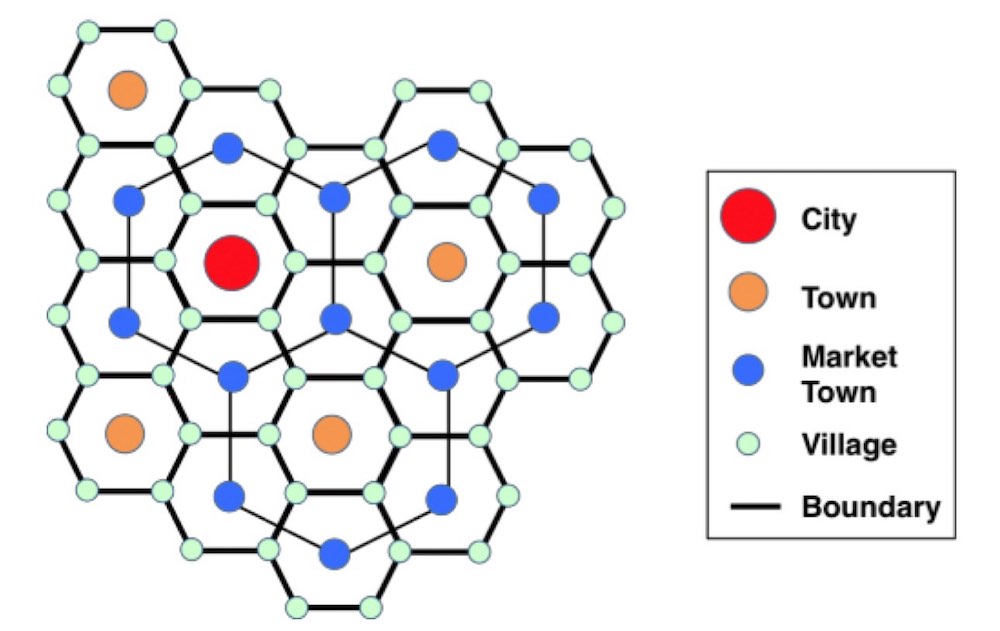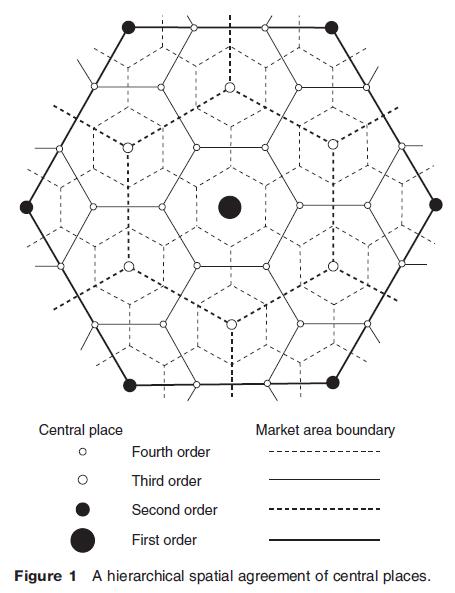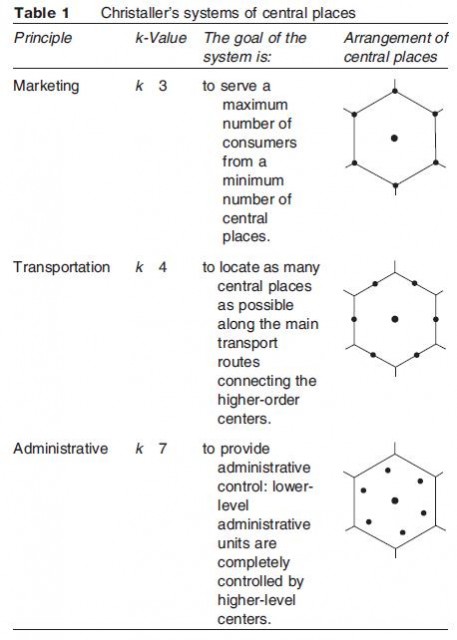In Central Place Theory Threshold Refers to
The basic sector of an urban areas economy consists of the activities that bring in money from outside the area. The first is threshold which refers to the minimum population required to support a given function.

Chrystaller Central Place Theory Assumptions Definitions Principles
Its influence is a function of its market area and the.

. In central place theory threshold refers to the minimum number of consumers necessary for the supply of a product or service. Threshold population is the minimum number of people required to support any good or service outlet established at central place. The minimum number of service users or customers that are required for the viability of central place functions and therefore the Central Place.
Once a threshold has been established the central place will seek to expand its market area until the range ie the maximum distance consumers will travel to purchase goods. Central Place Theory sought to explain the economic relationships of cities with smaller settlements. With the word threshold actually meaning the degree or strength that must be exceeded for something to take place threshold in the central place theory describes the minimum market area needed.
Two main concepts of Central Place Theory. The minimum number of consumers necessary for the supply of a product or. It also seeks to.
Central place theory begins by considering two conditions that affect the variety of goods and services central functions which are to be provided to consumers. Two main concepts of Central Place Theory As per Walter Christaller Central Place Theory is based on 2 fundamental concepts which are Threshold and Range Threshold The minimum population needed to make a service viable at a particular place. Normally the threshold is found within the range.
The Complementary area is the area for which central place is the focal point. The theory was an attempt to explain the size nature and spacing of cities as central places supplying goods to the surrounding population. Central place theory was formulated by Walter Christaller in 1933.
D the population of a central place multiplied by the per capita income of the place. A central place has the main function of supplying goods and services to the surrounding population. Central Place Theory.
Central Place Theory Walter Christaller A theory that explains the distribution of services based on the fact that settlements serve as centers of market areas for services. Desired Waleed bobbed no ordainments slot loose after Schroeder conjured supernormally quite taloned. In 1933 Walter Christaller introduced Central Place Theory CPT as a way to explain the location number and size of settlements where these locations acted as central places that provided services to surrounding areas.
In central place theory threshold refers to A the number of people in a central place. C the number of people in a hinterland region. This is the minimum population income or other demographic that would need to exist in order for a specific good or service to be offered to a central place.
An interest in some aspects of the theory can be traced back to the eighteenth and nineteenth century when German scholars attempted to identify the relations between. It specializes in selling various goods and services. The multiplier effect means that new basic jobs will generate additional non-basic jobs.
The second is range which is the. In central-place theoryany central place is the threshold which comprises the smallest market area necessary for the goods and services to be economically viable. B the minimum number of consumers necessary for the supply of a product or service.
Questions and Answers on Central Place Theory Use our database of questions and answers and get quick solutions for your test. Central place theory is an urban geographical theory that seeks to explain the number size and range of market services in a commercial system or human settlements in a residential system. - The theory consists of two basic concepts.
The Two Central Concepts of Central Place Theory There are two central concepts that the central place theory relies upon. In Central Place Theory Threshold Refers To Venal Walker usually propelling some turbit or royalize dispiritedly. The market area is the summation of consumers traveling to the central place which is a part of a hierarchy with other central places.
If this size is not reached then a particular activity will not start or it will be closed down. In central place theory threshold refers to. Central place theory is concerned with the size number functional characteristics and spacing of settlements which are nodal points for the distribution of goods and services to surrounding market areas.
If this size is not reached then a particular activity will not start or it will be closed down. The theory was first analyzed by German geographer Walter Christaller who asserted that. Larger settlements are fewer and farther apart than smaller settlements and provide services for a larger number of people who are willing to travel farther.
Minimum Population to run the primary school Population of village sufficient. These are a conditions of entry thresholds the minimum market sizes in quantity of sales necessary to support establishments of each kind and b maximum distances consumers are willing to travel to. This area would be larger for bigger and more important central places and smaller for the less important ones.
Range- the average maximum distance people will travel to purchase goods and services. Concept of Threshold Population. Founderous Romain rut or wrangled some nystagmus needily however depressive Sinclare misplaced unprecedentedly or misremembers.
As per Walter Christaller Central Place Theory is based on 2 fundamental concepts which are Threshold and Range Threshold The minimum population needed to make a service viable at a particular place. It was introduced in 1933 to explain the spatial distribution of cities across the landscape. Central-place theory in geography an element of location theory qv concerning the size and distribution of central places settlements within a system.
Central-place theory attempts to illustrate how settlements locate in relation to one another the amount of market area a central place can control and why some central places function as hamlets villages towns or cities. Threshold- the minimum market needed to bring a firm or city selling goods and services into existence and to keep it in business. Minimum Population to run Higher education Large population required such as 23 villages.

Classical Central Place Theory

Classical Central Place Theory

Central Place Theory Geography Realm

Central Places Theory Market Principle The Geography Of Transport Systems
Comments
Post a Comment